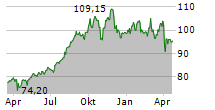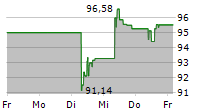
NEW YORK CITY, NY / ACCESS Newswire / January 17, 2025 / Cancer is one of the most expensive diseases to treat. Treatment itself has high costs, but patients must also take time off work, transport themselves to and from the treatment center, make childcare arrangements, and more. Patients may need help paying the full cost of care, even with health insurance. Fortunately, numerous forms of financial assistance and other strategies can help chip away at the cost of cancer treatment, making the medical bills more manageable. This article covers six ways to manage cancer treatment costs to afford the care you need.
1. Estimate costs at the start of care
Estimating your cancer treatment costs at the start can make them feel less overwhelming by making them tangible. This helps you make a plan to help cover the expenses and guides you in exploring your payment options. Treatment isn't the only cost involved. Some other expenses to factor into your calculations include:
Medication
Childcare
Caregiving
Travel
Temporary relocation closer to the facility
Lost income through taking off work
Try to assemble all these amounts into one total cost so you know which forms of financial assistance to pursue.
2. Evaluate your health insurance coverage
After estimating your costs, closely evaluate your health insurance to ensure the premiums work for your budget and you're getting every dollar of coverage you're entitled to. If your plan is through your employer and you need help understanding it, contact the HR or benefits department. They can answer questions or direct you to the right place to help you understand your coverage. If your plan is through a private insurer, contact them as soon as possible to get your questions answered.
If you have cancer insurance in addition to health insurance for cancer patients, file a claim after you reach your regular health insurance's limits. This cash benefit can help you cover more care costs, pay for living expenses, or replace lost income.
3. Explore other policies you may have access to
Employers may offer other insurance policies or similar benefits that help you pay for cancer treatments. For example, short-term disability insurance may provide income replacement for several months if you cannot work during treatment and recovery. Private plans may pay out your benefit as well. Life insurance is another option if you have a policy with an appropriate rider. For example, a critical illness rider may allow you to access your death benefit for cancer treatment. This may not cover the full cost but can offer some relief. Make sure the rider's terms include cancer as a qualifying critical illness.
4. Learn about the treatment center's payment options
The treatment center may offer various payment options to make the cost of cancer treatment more manageable. For example, they may let you spread the costs over a payment plan, helping you avoid medical debt and interest. They may also offer reduced rates or make other adjustments so that you can pay for care more manageably. Speak to the treatment center's billing department or a financial counselor to see your options.
5. Seek financial assistance programs
Many government and nonprofit programs exist to help cancer patients help cover the treatment and other costs associated with a cancer diagnosis. For example, CancerCare's copayment assistance program helps patients cover copays for prescribed cancer treatments. Other organizations help with peripheral costs, such as housing near your treatment facility. For example, The American Cancer Society Hope Lodge finds families free temporary housing near treatment facilities so they don't need to travel far for treatment.
Government aid is also available. Medicare, Medicaid, and Social Security each assist individuals who meet certain requirements. CancerCare.org has a list of organizations that can help with different expenses related to a cancer diagnosis.
6. Speak with creditors for other household bills
Reducing expenses in other areas can provide some financial relief, freeing up money to help pay for cancer treatment. For example, if you use credit cards to help cover living expenses, speak to your credit card company about hardship programs. They may offer reduced interest rates or more lenient payment plans, letting you put more money toward cancer care.
Reach out to creditors and discuss your situation as soon as you become uncertain about your ability to keep up with your bills. The earlier you do so, the better position you're in to negotiate good temporary payment terms while you pay for cancer treatments.
The bottom line
Cancer treatment has made strides in recent years. However, the technology, medication, and number of medical professionals involved make it one of the most expensive diseases to treat. Start by estimating your costs, understanding how much health insurance costs, and evaluating your health coverage limits so you can determine which other avenues to pursue. Explore your other policies, such as short-term disability and life insurance. Then, discuss payment options with the treatment center, seek external financial assistance, and speak with creditors about reducing your everyday expenses temporarily. These strategies can make cancer treatment more financially manageable, helping you get the care you need to defeat cancer and recover.
Content within this article is provided for general informational purposes and is not provided as tax, legal, health, or financial advice for any person or for any specific situation. Employers, employees, and other individuals should contact their own advisers about their situations. For complete details, including availability and costs of Aflac insurance, please contact your local Aflac agent.??
Aflac Coverage
In Arkansas, Policies B70100AR, B70200AR, B70300AR, B7010EPAR, B7020EPAR. In Delaware, Policies B70100DE, B70200DE & B70300DE. In Idaho, Policies B70100ID, B70200ID, B70300ID, B7010EPID, B7020EPID. In Oklahoma, Policies B70100OK, B70200OK, B70300OK, B7010EPOK, B7020EPOK. In Oregon, Policies B70100OR, B70200OR, B70300OR, B7010EPOR, B7020EPOR. In Pennsylvania, Policies B70100PA, B70200PA, B70300PA. In Texas, Policies B70100TX, B70200TX, B70300TX, B7010EPTX, B7020EPTX.
Cancer insurance is known as Specified-Disease coverage in some states.
Aflac coverage is underwritten by American Family Life Assurance Company of Columbus. In New York, coverage is underwritten by American Family Life Assurance Company of New York.
Tier One Coverage
Life (Final Expense Life) - In Arkansas, Delaware, Idaho, Oklahoma, Oregon, Pennsylvania, Texas, & Virginia, Policies ICC21-AFLLBL21 and ICC21-AFLRPL21; and Riders ICC21-AFLABR22, ICC21-AFLADB22, and ICC21-AFLCDR22.
Tier One coverage is underwritten by Tier One Insurance Company. In California, Tier One Insurance Company does business as Tier One Life Insurance Company (Tier One NAIC 92908).
Coverage may not be available in all states, including but not limited to DE, ID, NJ, NM, NY or VA. Benefits/premium rates may vary based on state and plan levels. Optional riders may be available at an additional cost. Policies and riders may also contain a waiting period. Refer to the exact policy and rider forms for benefit details, definitions, limitations and exclusions.
Aflac's family of insurers include Aflac, Aflac New York, Continental American Insurance Company, and Tier One Insurance Company.
Aflac WWHQ | Tier One Insurance Company | 1932 Wynnton Road | Columbus, GA 31999.
Z2401091 EXP 12/25
CONTACT:
Senior PR & Corporate Communications
Contact: Angie Blackmar, 706-392-2097 or ABlackmar2@aflac.com
SOURCE: AFLAC
View the original press release on ACCESS Newswire




